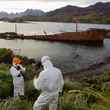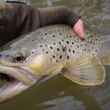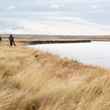A letter signed by over 230 scientists was delivered to the US Congress yesterday, urging lawmakers to support the Tongass 77, the comprehensive legislative proposal that would preserve 1.9 million acres of threatened salmon and trout habitat through the identification and protection of what researchers have determined are the 77 highest value watersheds within the Tongass. Scientists who signed the letter span the fields of biology, biochemistry, ecology, zoology, natural resources, environmental science, cultural anthropology, geology, wildlife and marine biology and many more.
The Tongass National Forest's vitality and breadth are globally unique but are endangered. Supporting the harvest of over 50 million salmon each year, the Tongass plays an important role in the economy and ecology of southeast Alaska as well regions far beyond its borders.





























